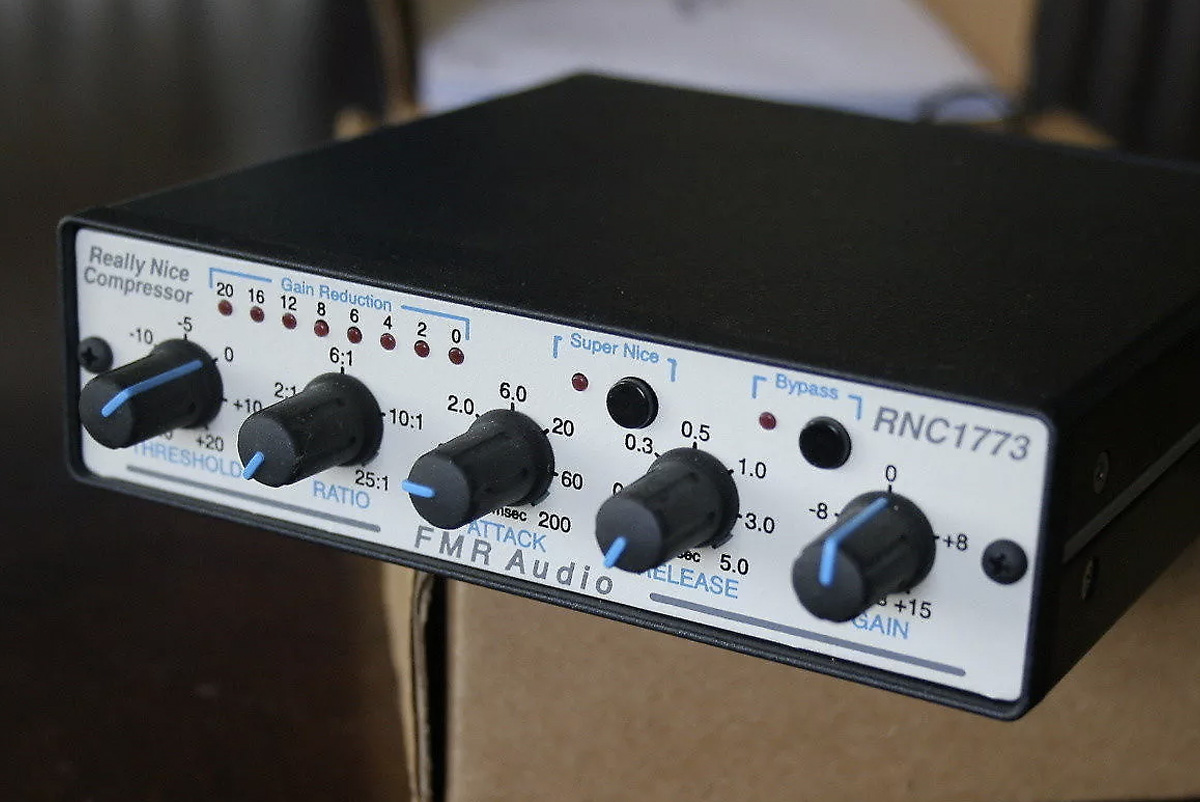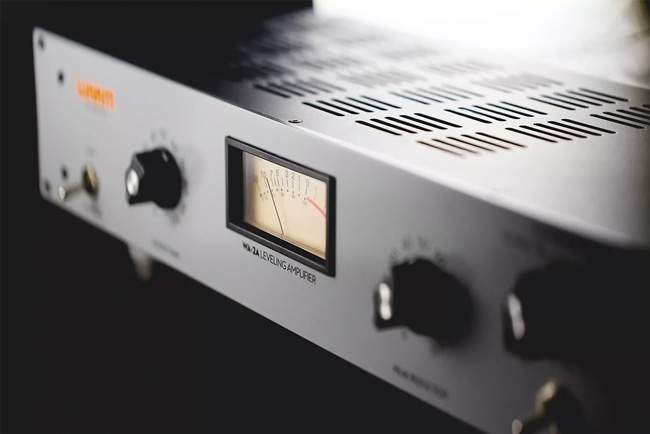When it comes to audio production and recording equipment, things can easily get more complicated the deeper into the gear you go—especially when you start running into variations of equipment that do similar things. This is definitely the case when it comes to compressors and limiters, which are both dynamics processors that perform similar functions in different ways.
Below, we're going to look at both types of processors, explain their differences, and help you figure out which one is most suitable for you. We've also provided a few go-to options in each category if you're ready to pick one up for yourself.
What is a compressor?
The point of a hardware compressor is to control, shape, and ultimately reduce an audio signal's dynamic range—the difference between the loudest and quietest portions of the track. Reducing the dynamic range of your audio signal makes the loudest bits quieter and the quietest parts louder, resulting in a signal that's more even and level overall.
A compressor does this, mainly, by reducing the gain of an audio signal every time it crosses over its set threshold. The amount of gain reduced is determined by the compressor's ratio. If your compressor's ratio is set at 2:1, for example, that would mean that for every two decibels the input signal is increased, the output can only increase to one decibel, which halves the dynamic range. Other important parameters like attack and release times—how quickly to compress and for how long, respectively—also play important parts in how your compressor ultimately performs. Also, a compressor's make-up gain function will allow you to add back gain to compensate for lost volume.
Engineers use compression in the studio in a variety of ways. During the initial recording process, for example, compression can be applied to a signal to keep its transients—the sharp volume peaks from things like snare hits, vocal consonants, and the sound of a pick hitting your guitar strings—from clipping. Compression can also help prevent clipping during the mixing and mastering process. Applying compression to a track can also affect its punch by changing the envelope of the sound, and compression can also be used to control where that instrument sits in the mix.
While small amounts of compression are often used on all manner of instruments and groups of instruments, large amounts of compression—via low thresholds and high ratios—can be used in creative ways. The bump of hip-hop drums or thick bass sounds in dance music are often created with heavy amounts of compression.

What is a limiter?
Living in the same dynamics processors family as multi-band compressors, gates, expanders, de-essers, and their closest cousin compressors is where you'll find limiters. Similarly to compressors, limiters are designed specifically to prevent audio signal levels from going higher than a set point. What separates them from compressors in practice is the ratio used in reducing gain, which is much higher than that of a regular compressor.
Technically, a limiter's ratio is 10:1 or greater and is usually set to be as close to infinity:1 as possible, so that no matter how much the input signal changes, the output level remains the same. By establishing a maximum gain setting, the limiter actually prevents the audio signal from going over it (rather than smoothing out and reducing the gain when it does, like a compressor would). This raises the overall level in the most transparent way, without clipping or adding any sort of distortion or noise. Limiters are often used in the final mastering stages of record production to ensure that levels are consistent throughout the mix.
Limiters also have faster attack and release times than compressors, which is another reason that they're more transparent. While a compressor's slower attack times means that the punch isn't cut from percussive sounds and the slower release times make the overall adjustments more fluid and gentle, a limiter's quicker times allow it to deal with brief transients faster without affecting the rest of the audio signal. Something to remember here, particularly, is that the quick attack and release times (what makes a limiter more transparent than a compressor) can be what leads to an audio signal that sounds blunt, flat, and dull if the limiter is pushed too hard.
What can sometimes further confuse the differences is that any limiter can be used as a compressor, but compressors can't be used as limiters. You'll often find producers and engineers gently compressing a vocal with a LA-2A-style limiter or treating drums with an 1176 limiter. But because compressors treat input signals differently and don't have a high enough ratio, they cannot be used as limiters.

More Information on Compressors/Limiter
Regardless of whether you're working with a limiter or a compressor, it's important that you know exactly what you're applying the effect to, why, and how you should go about doing it. It's easy for engineers to assume that these effects will benefit every track they're working with and apply it accordingly, but you'll never get the results you're looking for if you don't learn what you're doing and how you should be doing it.
To that end, be sure to check out our guide on compression and dynamics processing or click any of the links in the related articles box below.


